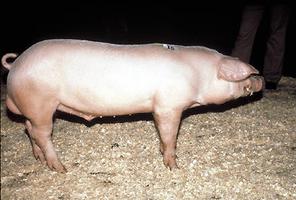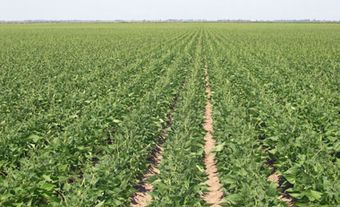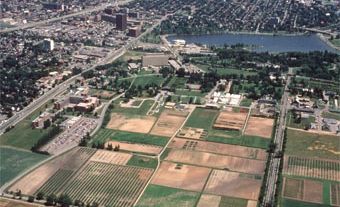
Agricultural Research and Development
The Canadian agri-food industry has become an effective producer and processor of food and feed as the result of the work of innovative, hard-working farmers,
The greatest challenge to agricultural research lies in the primary production of food. However, the agriculture and food system also includes industries involved in the food processing, supply and agricultural marketing sectors. Because agricultural products must meet human nutritional needs, food research complements conventional agricultural production research to provide abundant yields of a wide variety of high-quality foods.
The research station and experimental farm system has expanded to include over 40 research establishments from coast to coast. Provincial research bodies have been established, and university and industrial research programs have proliferated. During a century of research, plant varieties and animal strains have been improved; good soil conservation practices have been implemented; losses by insect pests, plant diseases, animal disease, drought and frost have been reduced or overcome; economical methods of storage and food preservation have been discovered; and better means of using food crops and animal products have been developed. These types of research serve to make Canadian farmers more secure in their undertakings and to provide consumers with better products.
Responsibility for Research
In Canada, both provincial and federal governments may legally undertake research. Responsibility for overall adequacy rests with federal authorities, while the provinces have jurisdiction over agricultural teaching and extension. The research function is shared among Agriculture Canada and other federal agencies, provincial departments of agriculture, provincial research councils, university faculties of agriculture and veterinary medicine and private industry. The respective roles of these organizations were considered and defined by representatives of the institutions and departments involved at a series of meetings held in 1964. Representatives agreed that all agencies engaging in agricultural research must be at liberty to undertake any or all types of investigation falling within their competence. There are 3632
Two major national committees made up of representatives of provincial and federal governments, universities and other organizations involved in research are responsible for the coordination of agricultural research. The Canadian Agricultural Services Co-ordinating Committee (est 1932, reorganized 1964) coordinates research, extension and education services, and is responsible for assessing immediate and future research needs and developing appropriate proposals. Provincial and regional committees assess and make recommendations regarding agricultural research and education within provinces. The Canadian Agricultural Research Council (est 1974) is the primary adviser to the government on the state of agricultural research in Canada.
Successes and Goals
Review and adjustment of agricultural research policy is a continuous process. Changes in the structure and organization of research must keep pace with changes in agriculture. Success in agricultural research results in part from linkages between scientific discovery, technological development and application. Results of research are usually disseminated through agricultural extension services of provincial departments of agriculture, although results which can be incorporated immediately into farming practice are sometimes disseminated by the organization which conducted the research.
Canadian successes in plant breeding, disease control, animal breeding, etc, have won international renown. Among the most significant of these achievements are the various developments in wheat, from Red Fife (1840s) to Marquis
The creation of canola as a source of vegetable oil and oil cake that are respectively safe for human and animal consumption was a major success of the postwar period. Researchers at University of Manitoba were largely responsible for the production of an entirely new, man-made cereal crop, triticale, a fertile cross between 2 genera of cereals, wheat and rye.
Less dramatic but economically very important developments include improvements in
Perhaps the best known success in animal breeding is the development of the Lacombe hog at the Agriculture Canada
Agricultural methods have changed, but the responsibility of the Canadian agriculture and food system is still to provide the population with an adequate supply of nutritious and wholesome food. The
Agriculture Canada
As the largest of the public research agencies, Agriculture Canada has assumed the major share of responsibility for agricultural research, directly conducting over 50% of all agricultural research in Canada. The program is largely concentrated in the Research Branch, but funds are also provided
Provincial Departments
Provincial departments of agriculture play a vital role in intraprovincial research. Because of their close contacts with farmers, especially through their extension personnel, provinces can readily identify research needs. They also participate in research advisory committees at provincial and national levels. Agricultural research activities vary from province to province as a result of historical development in Canada, including differences in the economic importance and nature of agricultural products in the various provinces.
In the West the provinces do relatively little research, instead relying to a greater or lesser extent on universities and federal agricultural research stations. In Ontario and Québec provincial departments sponsor research services, farms and stations and also support agricultural research at the university level. The Atlantic provinces, with only
Universities
Universities across Canada conduct agricultural research programs necessary in the training of research scientists, and act as research institutions for federal and provincial governments to a greater or lesser extent. University researchers (at 11 faculties of agriculture and veterinary medicine) comprise the second-largest single group of agricultural scientists in Canada.

 Share on Facebook
Share on Facebook Share on X
Share on X Share by Email
Share by Email Share on Google Classroom
Share on Google Classroom



